Large-Scale Characterization of Drug Responses of Clinically Relevant Proteins in Cancer Cell Lines
- PMID: 33157050
- PMCID: PMC7738392
- DOI: 10.1016/j.ccell.2020.10.008
Large-Scale Characterization of Drug Responses of Clinically Relevant Proteins in Cancer Cell Lines
Abstract
Perturbation biology is a powerful approach to modeling quantitative cellular behaviors and understanding detailed disease mechanisms. However, large-scale protein response resources of cancer cell lines to perturbations are not available, resulting in a critical knowledge gap. Here we generated and compiled perturbed expression profiles of ∼210 clinically relevant proteins in >12,000 cancer cell line samples in response to ∼170 drug compounds using reverse-phase protein arrays. We show that integrating perturbed protein response signals provides mechanistic insights into drug resistance, increases the predictive power for drug sensitivity, and helps identify effective drug combinations. We build a systematic map of "protein-drug" connectivity and develop a user-friendly data portal for community use. Our study provides a rich resource to investigate the behaviors of cancer cells and the dependencies of treatment responses, thereby enabling a broad range of biomedical applications.
Keywords: biomarker; cancer signaling pathway; drug response; protein array.
Copyright © 2020 Elsevier Inc. All rights reserved.
Conflict of interest statement
Declaration of Interests R.A. is a bioinformatics consultant for the University of Houston. G.B.M. is on the scientific advisory board or a consultant for AstraZeneca, ImmunoMet, Lilly, Nuevolution, PDX Pharmaceuticals, Symphogen, and Tarveda; has stock options with Catena Pharmaceuticals, ImmunoMet, SignalChem, and Tarveda; and has licensed technologies to Myriad and Nanostring. H.L. is a shareholder and scientific advisor of Precision Scientific Ltd.
Figures
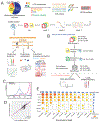
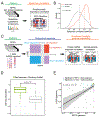

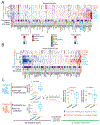
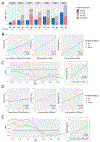
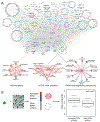
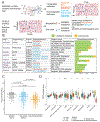
References
Publication types
MeSH terms
Substances
Grants and funding
- P30 CA016672/CA/NCI NIH HHS/United States
- P50 CA217685/CA/NCI NIH HHS/United States
- R00 CA222554/CA/NCI NIH HHS/United States
- P30 CA010815/CA/NCI NIH HHS/United States
- U54 HG008100/HG/NHGRI NIH HHS/United States
- R01 CA232256/CA/NCI NIH HHS/United States
- P50 CA221703/CA/NCI NIH HHS/United States
- U24 CA210949/CA/NCI NIH HHS/United States
- U24 CA143883/CA/NCI NIH HHS/United States
- U24 CA210950/CA/NCI NIH HHS/United States
- UL1 TR003167/TR/NCATS NIH HHS/United States
- P01 CA114046/CA/NCI NIH HHS/United States
- P50 CA098258/CA/NCI NIH HHS/United States
- U01 CA168394/CA/NCI NIH HHS/United States
- U01 CA217842/CA/NCI NIH HHS/United States
- U24 CA209851/CA/NCI NIH HHS/United States
- R50 CA221675/CA/NCI NIH HHS/United States
LinkOut - more resources
Full Text Sources
Other Literature Sources
Medical
Miscellaneous

